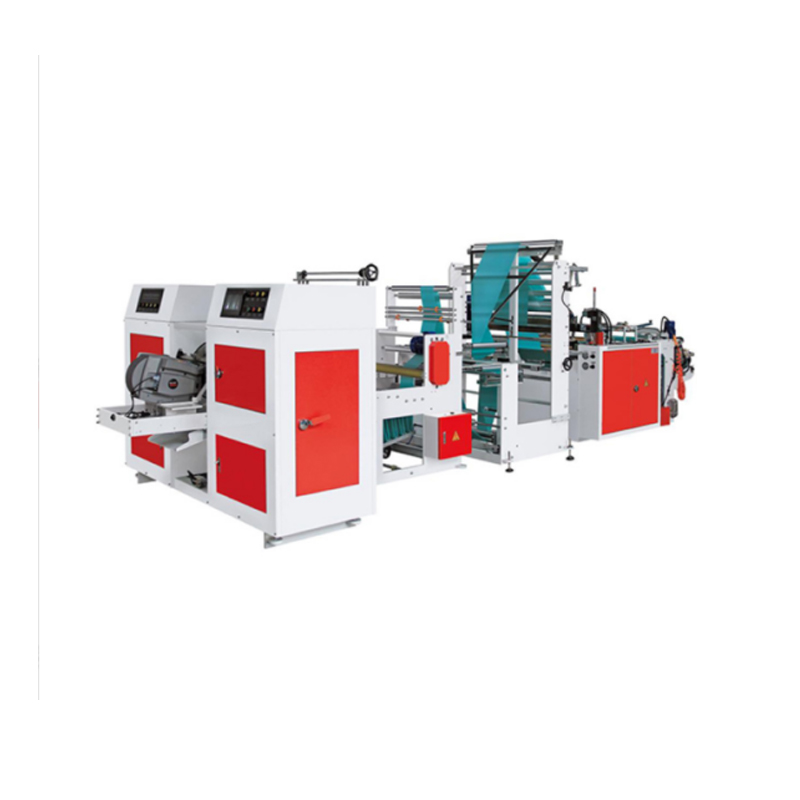Folding Rubbish Bag Making Machines: Redefining Performance in Waste Packaging Automation
 By Admin
By Admin
As the demand for efficient waste management and eco-conscious packaging rises globally, the manufacturing technologies behind everyday essentials like rubbish bags are seeing major innovations. One development in this space is the Folding Rubbish Bag Making Machine — a purpose-built, high-efficiency solution designed to automate not only the bag forming process but also the folding and stacking phases, making it a critical piece of equipment for modern packaging lines and hygiene product manufacturers.
Unlike conventional bag making machines that require additional steps or secondary machinery to fold or stack output, the Folding Rubbish Bag Making Machine performs these tasks in one seamless, integrated cycle. This advanced level of automation not only boosts productivity but also improves product consistency, handling, and packaging efficiency — key advantages for industries supplying garbage bags to retail, municipal, or industrial waste channels.
Fully Automated Bag Folding Mechanism
A defining feature of this machine is its in-line folding capability. Traditional bag production systems typically end after sealing and cutting, requiring separate folding and packing operations. The Folding Rubbish Bag Making Machine, however, includes a precise mechanical or servo-driven folding unit that automatically folds each bag (or a stack of bags) into a compact, uniform shape, ready for packaging or automatic boxing.
This folding feature is especially valuable in producing drawstring or star-sealed garbage bags that are sold in roll or folded stack formats. Whether it's half-fold, Z-fold, or multilayer fold, the machine’s folding precision reduces labor dependency and improves packing density, making storage and shipping more efficient.
High-Speed and Stable Output
Modern Folding Rubbish Bag Making Machines are engineered for high-volume production, capable of outputting up to 180–250 bags per minute, depending on the thickness, size, and design of the bag. Even at these speeds, the machines deliver a stable and consistent performance.
A combination of servo motors, intelligent tension control, and film alignment systems ensures that bags are sealed and cut with uniform dimensions and flawless finishing. The automatic film unwinding systems prevent roll deformation and maintain consistent feeding throughout the production cycle.
Advanced Sealing and Cutting Technologies
The quality of a rubbish bag often hinges on the strength of its seal, especially for handling heavy or wet waste. Folding Rubbish Bag Making Machines use precisely controlled heat sealing units, either bottom-seal or side-seal, depending on the bag style. These heating elements are managed via digital PID controllers that adjust in real-time based on film type and thickness, preventing overheating or seal burn-through.

The cutting systems, typically cold blade or rotary cutters, are designed for durability and can handle a wide variety of polyethylene-based films, including LDPE, LLDPE, HDPE, and recycled film blends. With fast blade-change mechanisms and integrated safety systems, maintenance and operation are streamlined.
Material Versatility and Bag Variety
One of the major strengths of Folding Rubbish Bag Making Machines is their adaptability to various film materials and bag styles. The machine can process mono-layer and multi-layer PE films with thicknesses ranging from 10 to 100 microns, and is compatible with recycled and biodegradable film types—ideal for meeting modern sustainability targets.
From flat garbage bags to gusseted types, drawstring bags, or perforated tear-off rolls, the machine can be configured to meet a wide range of specifications. This flexibility allows manufacturers to serve both domestic and commercial markets with ease.
Integrated Perforation and Coreless Roll Capabilities
Many Folding Rubbish Bag Making Machines also feature automatic perforation systems, enabling the creation of roll-type bags that can be easily torn off at usage points. Perforation depth and spacing are adjustable, and dual-perforation options allow for easy separation and additional reinforcement.
Furthermore, for applications requiring roll packaging, the machine can be adapted to include a coreless rolling unit, which reduces material cost and environmental impact. Bags are automatically rolled and optionally folded before being discharged, fully prepared for downstream wrapping or labeling.
User-Friendly Controls and Smart Diagnostics
Operation of these machines is simplified through touchscreen Human-Machine Interfaces (HMI) that provide real-time data on speed, output quantity, heat settings, error alerts, and more. Recipes for different bag formats can be stored and recalled with a single touch, making product changeovers fast and efficient.




